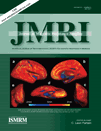Sensitivity of USPIO-enhanced R2 imaging to dynamic blood volume changes in the rat kidney
Abstract
Purpose:
To determine whether MRI in combination with an intravascular contrast agent is sensitive to pharmacologically induced vasodilation and vasoconstriction in the rat kidney.
Materials and Methods:
R2 imaging was performed in 25 Sprague Dawley rats at 3 Tesla in the presence of ferumoxytol, an ultrasmall superparamagnetic iron oxide (USPIO) agent with a long plasma half-life. R2 changes were measured following manipulation of blood volume by intravenous administration of adenosine, a short-acting vasodilator, or NG-nitro-L-arginine methyl ester (L-NAME), a long-acting nitric oxide synthase inhibitor with known vasoconstrictive effects. As a control, R2 responses to adenosine and L-NAME were also examined in the absence of ferumoxytol.
Results:
In the presence of ferumoxytol, adenosine induced a significant increase in R2, while L-NAME produced a reduction, although the latter was not statistically significant. Control experiments revealed small R2 changes in the absence of ferumoxytol. An incidental finding was that the cross-sectional area of the kidney also varied dynamically with adenosine and L-NAME.
Conclusion:
Our results suggest that ferumoxytol-enhanced R2 imaging is sensitive to adenosine-induced vasodilation. The responses to L-NAME, however, were not statistically significant. The variations in kidney size and the R2 changes in the absence of ferumoxytol may reflect alterations in the volume of the renal tubules. J. Magn. Reson. Imaging 2011;33:1091–1099. © 2011 Wiley-Liss, Inc.




